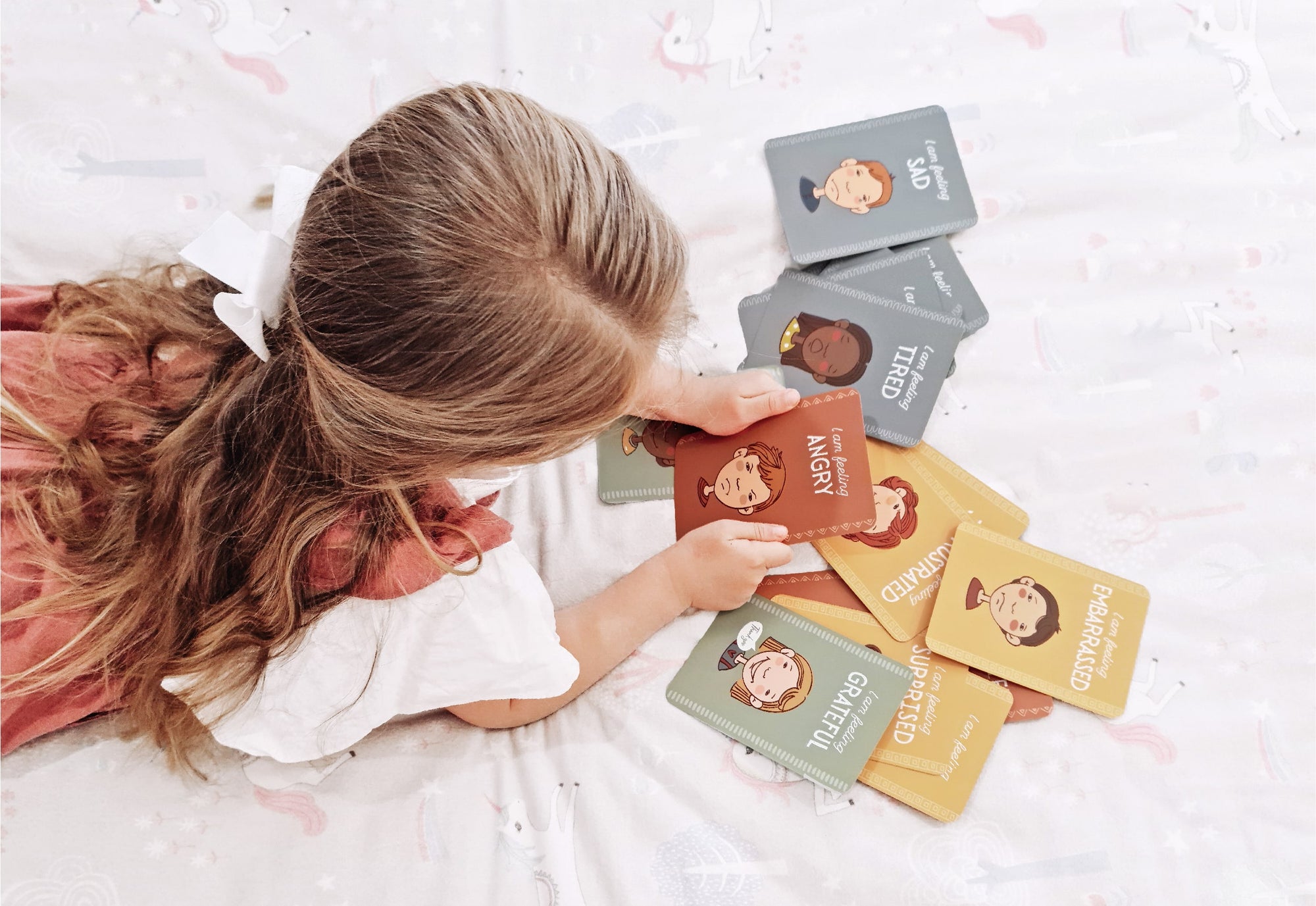Managing difficult emotions is hard, especially for kids with their brains still developing. The good news is that emotional regulation is a learned skill, which means that we can teach our little ones healthy emotional regulation. Learning to self-regulate is a key milestone in a child’s development – and these foundations are laid in the earliest years of life. The ability to regulate emotions affects every area of your child’s life. From their relationships with others, academic performance, mental health and their self-esteem. There are many ways to support your kids in developing this essential skill, while also making it a fun experience at the same time. Let’s get started.

Be a good role model
Before looking at our child’s behaviour, the first thing we should do is look inward at our own ability for emotional control. Of course, this is hard and one of the most challenging aspects of parenting (trying to stay calm while your toddler is having a meltdown in the supermarket is one of those moments!). Children do what they see, so the number one thing we can do to help our child is to model effective emotional regulation. This means acknowledging your responses to big feelings and finding your own calming strategies that work for you amid the stress and chaos of parenting. Techniques like mindfulness and deep breathing are all examples of strategies that you may choose to practise when you’re feeling overwhelmed.

Help your child to identify their emotions
From a young age, you can play an integral role in helping your child to recognise what emotions they are experiencing and how it makes them feel. For example, if you see your little one start to cry when you tell them it’s time to leave the playground, then help them to label the emotion they are feeling. “Are you feeling sad because we have to leave the playground?” This will help your child pair the emotion with how they are feeling at the time. It also provides them with an understanding that emotions don’t just come from nowhere - there is usually a trigger even if we as parents struggle to see the reason sometimes! To take it one step further, you can also talk to them about how their body might feel when they’re experiencing the emotion. For example: “Your tummy feels funny because you’re feeling nervous”.
Emotions Cards are a fantastic tool designed to help little minds explore within and teach them how to self-regulate their emotions in a fun and engaging way. Here at The Creative Sprout, we’ve created a set of emotions cards to do just that! We’ve incorporated easily recognisable colours to categorise all the different ways people feel and their states of alertness. These two-sided cards have illustrated children on one side expressing different emotions, and when flipped over there are questions that you can use as prompts to encourage your little one to open up about their feelings, along with handy activities to help them self-regulate when in each state.
Acknowledge and validate your child’s feelings
It is important to help your little one understand that it’s ok to be feeling the way they are, rather than dismissing their emotions with a “she’ll be right” attitude. Rather than saying “there’s nothing to worry about” or “don’t be scared”, acknowledge how they feel and normalise their experience instead. For example, if your child is scared of water and feels afraid before their first swimming lesson, you can support them in their feelings and acknowledge that trying new things can be scary. However, also ask them to a reflect on a time when they were scared about something else, and it turned out to be less scary when they gave it a go (like riding a bike or attending preschool for the first time). You can offer up a suggestion for dealing with the feeling they are experiencing too. For example: “would you feel better if I sat on the side of the pool to watch you?” or “would you like to wear your favourite googles?”

Teach your child coping strategies
It’s simply not enough to tell your child what NOT to do when they’re experiencing a difficult emotion. In the moment, it’s very tempting to just say “don’t hit, don’t throw toys”, however long term this will not teach them effective strategies to practise. Instead work with your child to develop a toolbox of coping strategies that work for them individually and that they can use in challenging times. Ideas include having some alone time in a quiet area like their bedroom, cuddling their favourite soft toy, listening to their favourite song or going through their emotions cards to identify how they’re feeling. Remember not every technique will work in every situation, so it’s great to have a ’toolbox full of different strategies that they can try out to see what works best.



